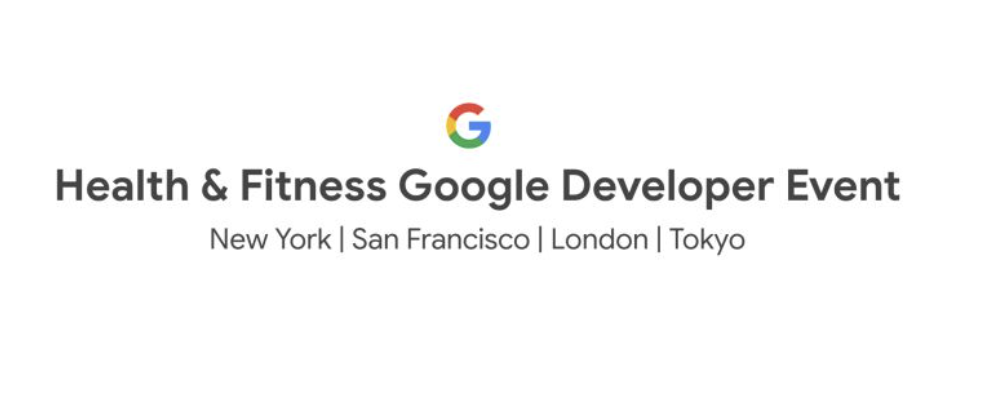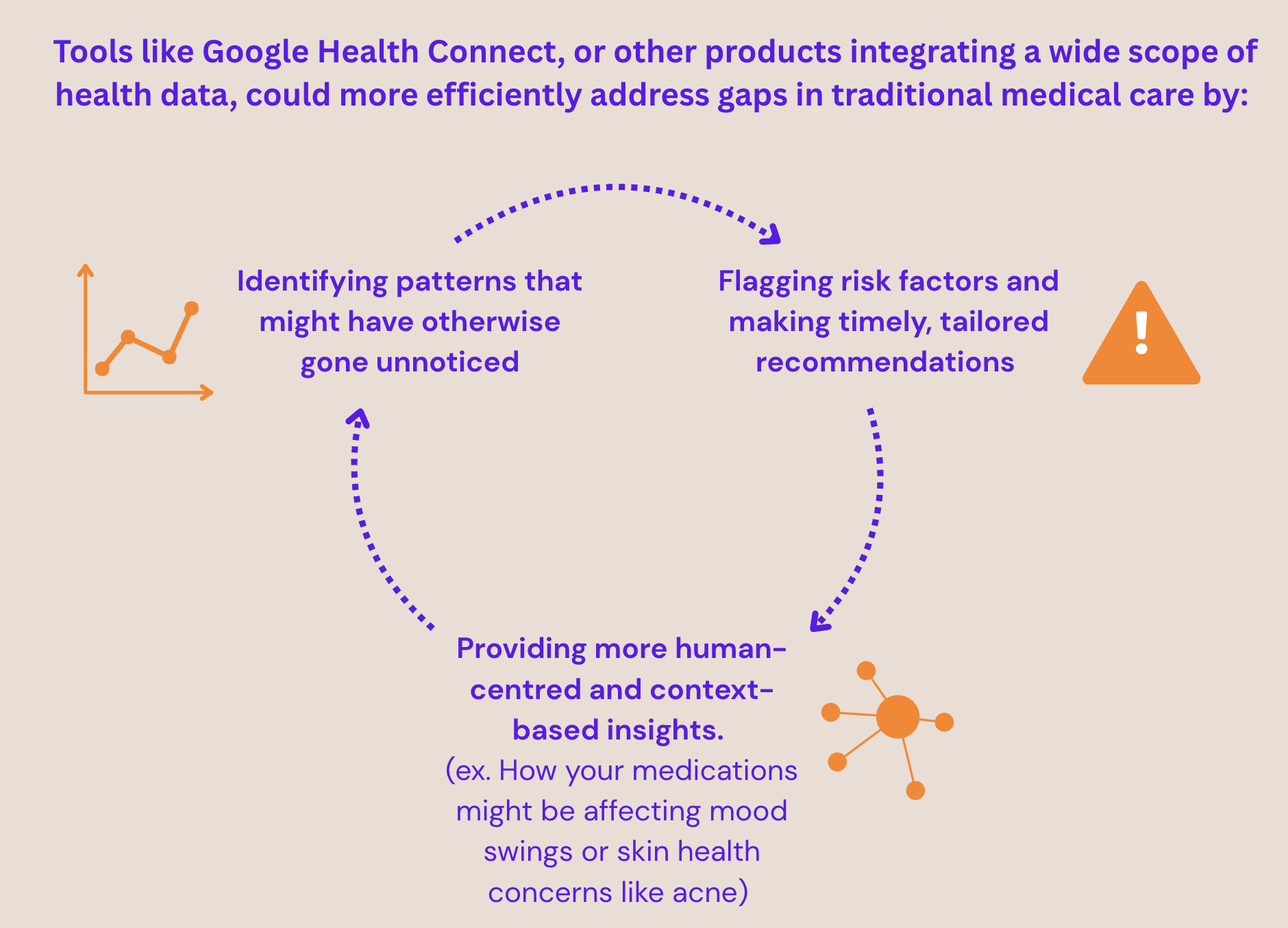Apr 29
Why Women Deserve More From Their Health Data
Have you ever wondered how the data on someone’s running app might influence the guidance their period or nutrition tracker might have?
If so, read on, because in this edition, we’re here to talk about data. More specifically: how much we have of it, how little of it is shared, and what that means for people navigating health journeys — especially women.

Events
This month, we had the opportunity to attend the Health & Fitness Google Developer Event discussing the role of AI and health data in reorganising personal and clinical care landscapes.
It also focused on Google Health Connect, a single place connecting fitness, health, and medical data from different sources to provide a holistic view of your health.
According to Mariana Perroni, Google’s Clinical Lead, the platform is inspired by a shift away from “episodic, reactive, and generic” care to care that is “continuous, proactive, and personal.”

Untapped Potential: When Data Can’t Communicate
From wearables tracking sleep and stress to apps monitoring menstrual cycles, we’re sitting on loads of health data.
Whilst each product collects valuable information, data is often difficult to share between platforms due to a lack of standardisation and interoperability. This means users have to frequently and painstakingly log the same type of information across multiple apps that don’t sync.
![]()
Whilst each product collects valuable information, data is often difficult to share between platforms due to a lack of standardisation and interoperability. This means users have to frequently and painstakingly log the same type of information across multiple apps that don’t sync.

Why is This a Problem?
If something feels off in our bodies, it’s often not just one thing, but rather the result of overlapping patterns that span across different areas of our health.
As it stands, we track our menstrual cycles in one app, monitor fertility in another, and log hormonal symptoms somewhere else entirely. Yet, these areas simply highlight different angles on the same underlying issues.
In practice, women’s health products like this also do similar tasks — provide guidance, recommendations, and insights based on data it receives — but target slightly different end goals.
So, What Could the Future Look Like?
Ideally, this shift towards more personalised and holistic care wouldn’t just benefit individuals. If patients came in with a better understanding of their concerns, it could also help ease the growing strain on health systems.
![]()
Our Takeaways for Dotplot
As we continue to develop Dotplot, we’re building with a critical eye for how personal health tracking can be done better.
Our goal is to create a product that connects the dots between various influencing factors to offer a more preventive and proactive standard of care. We want women to feel supported not just in the moment, but throughout their health journeys, whether that’s in the clinic or online.
That’s all for this month. See you in the next one 😉
As it stands, we track our menstrual cycles in one app, monitor fertility in another, and log hormonal symptoms somewhere else entirely. Yet, these areas simply highlight different angles on the same underlying issues.
In practice, women’s health products like this also do similar tasks — provide guidance, recommendations, and insights based on data it receives — but target slightly different end goals.
So, What Could the Future Look Like?
Ideally, this shift towards more personalised and holistic care wouldn’t just benefit individuals. If patients came in with a better understanding of their concerns, it could also help ease the growing strain on health systems.

Our Takeaways for Dotplot
As we continue to develop Dotplot, we’re building with a critical eye for how personal health tracking can be done better.
Our goal is to create a product that connects the dots between various influencing factors to offer a more preventive and proactive standard of care. We want women to feel supported not just in the moment, but throughout their health journeys, whether that’s in the clinic or online.
That’s all for this month. See you in the next one 😉